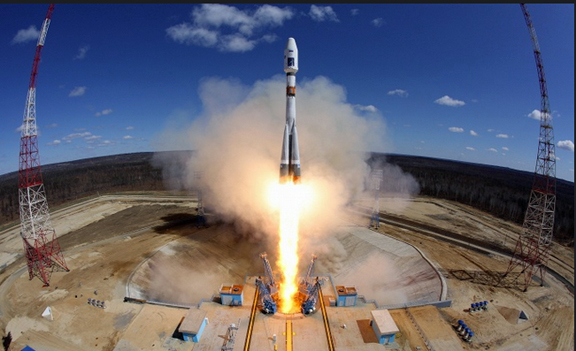
Photo of the launch is courtesy Marina Lystseva, TASS.
The Russian news agency, TASS, is reporting that a Soyuz-2.1a launch vehicle carrying three satellites has been successfully launched from Russia's new spaceport at Vostochny.
The satellites aboard the rocket include Lomonosov, Aist-2D and the SamSat-218. The launch occurred at 05:01 a.m., Moscow time, and nine minutes after blast off, the upper stage and the satellites separated from the rocket's third stage. This was the second attempt at a launch, as the original scheduled event was to occur on April 27th.
The Lomonosov satellite, also known as MVL-300, is packed with seven instruments to detect X-ray and Gamma-rays and is being operated by Moscow State University to examine the extreme physical processes in far and near-Earth space as well as within our planet's atmosphere. There are also a number of international partner institutions involved with this mission from Denmark, Mexico, South Korea, Spain, Taiwan and the US.
The tech demo and scientific research satellite that was developed at Samara Aerospace University, who worked with the TsSKB-Progress manufacturer, is the AIST-2D, which packs eight payloads and will operate from a Sun Synchronous Orbit. One object of this mission is to determine if a small satellite platform can host hyper-spectral and other sensors as well as deciding if the use of novel radar frequencies and hyperspectral bands for Earth observation is a viable technology.
Also developed by Samara State University students is the SamSat-218/D three-unit CubeSat, which will demo the use of smallsats to determine if these platforms can enable thermospheric science data collection from LEO. Via a communications terminal aboard the smallsat, commands and status telemetry reception are handled through the Globalstar satellite constellation, thereby adding comms capabilities to the SamSat-218/D without having to rely on ground stations for such operations.

